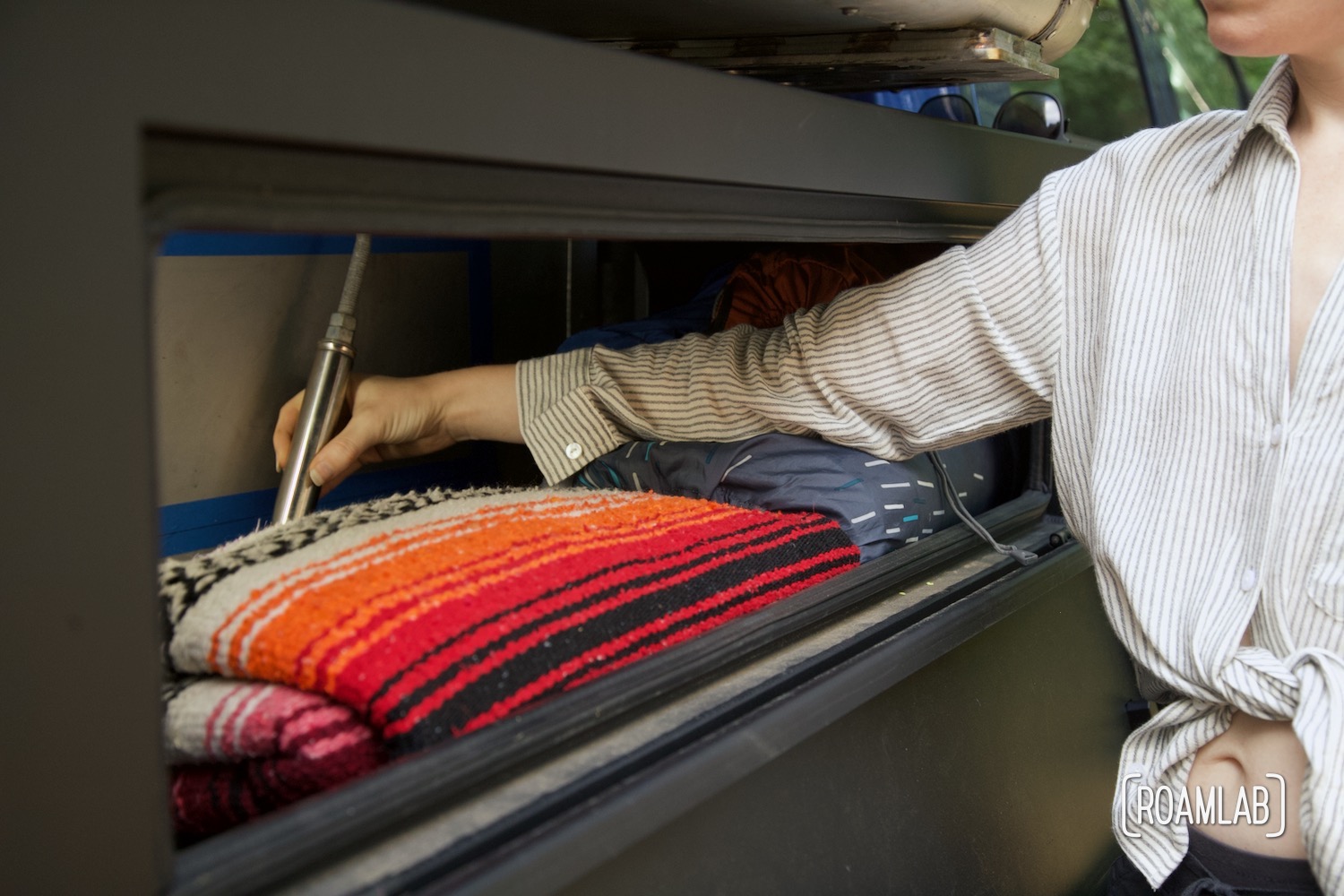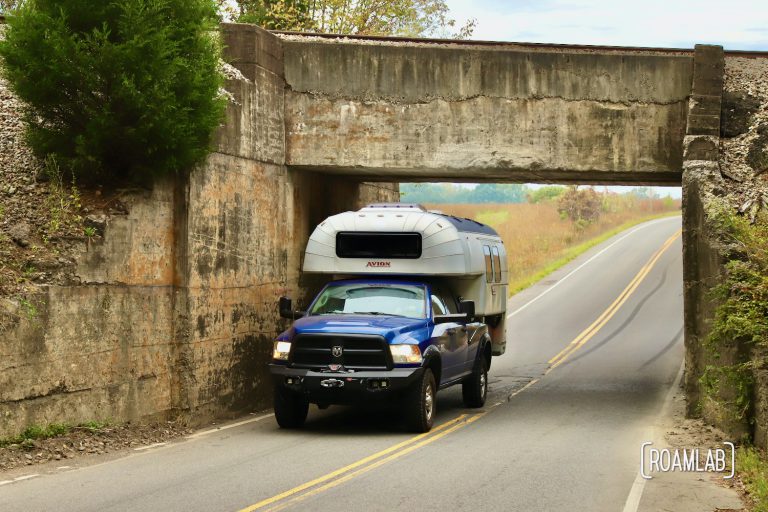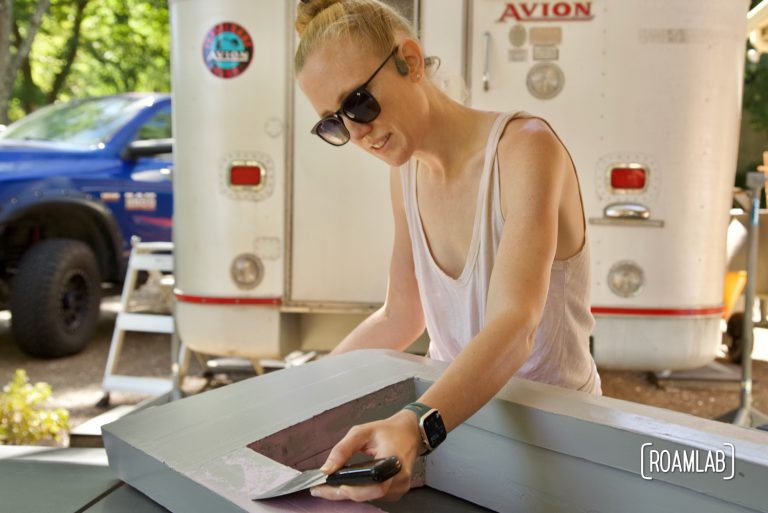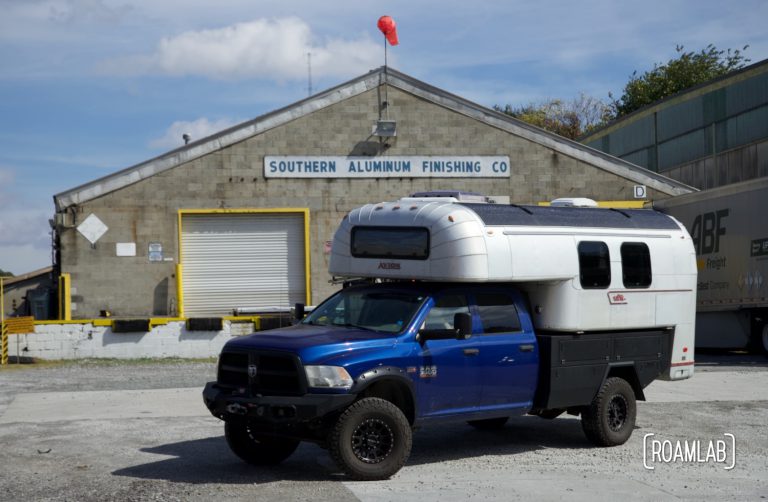We have had our share of close calls while living on the road. When we bought our 1970 Avion C11 truck camper, we were woefully underprepared. We didn’t have proper tie-downs rated for the truck camper’s weight. The mount points on the camper wings were almost completely rotted through. And, rather than turnbuckles, we used cables to secure the camper to the truck bed. Secure, to be clear, was our intent. Nothing was secure about that first drive from the previous owner’s driveway to our workshop. And in the years that followed, we continued to have our share of missteps. But with time, we’ve learned what most truck camper owners hopefully learn before some catastrophic accident: selecting the right set of turnbuckles is a critical part of truck camper ownership.
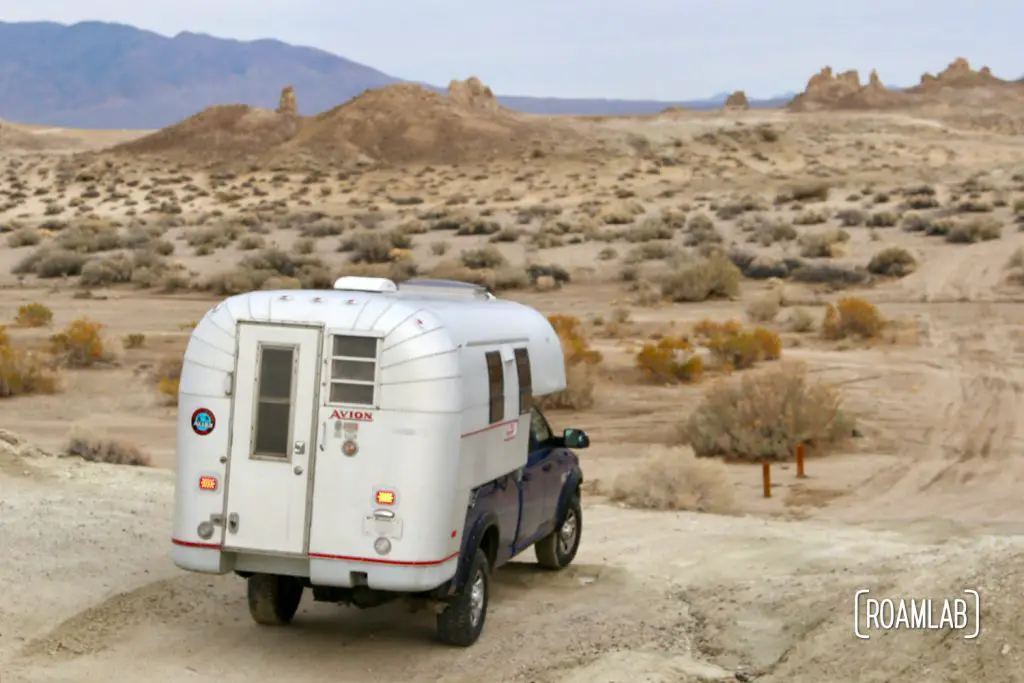
What are turnbuckles and what are they used for
Turnbuckles are binding devices used to adjust tension. Commonly, they consist of a frame with two threaded rods. Rotating the frame allows the threaded rods to loosen or tighten, depending on the direction.
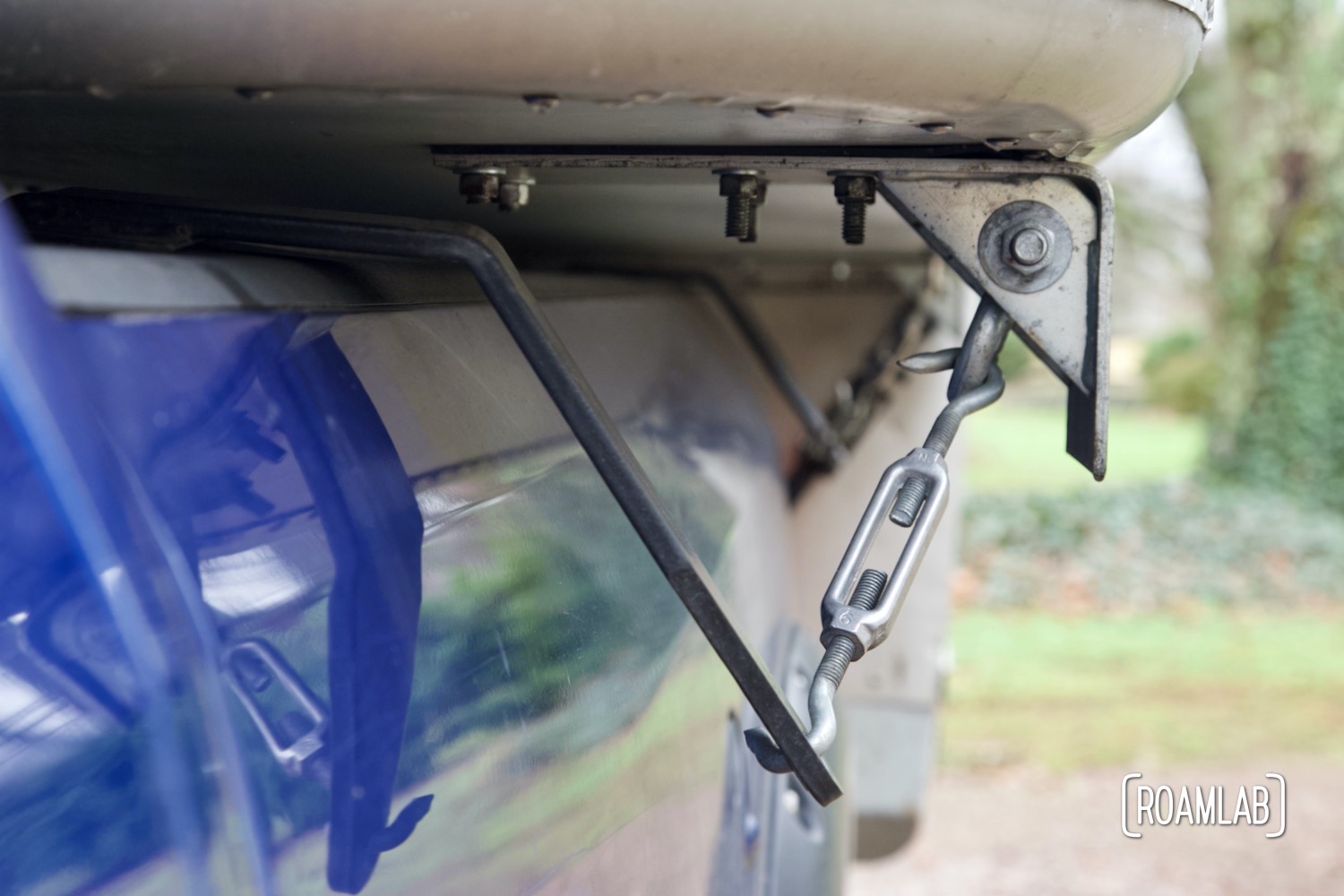
Tie-Down Turnbuckles for Truck Campers
While there are many ways people have bound their truck campers to their truck beds, turnbuckles are by far the most common. The turnbuckles connect the truck camper mount points to tie-down points on the truck. With this method, turnbuckles provide a lot of tensioning power, which helps secure a camper to the truck. They can also aid in distributing the load evenly across the camper and truck, which is important for preventing damage. Their threaded design allows camper owners to make minor adjustments as needed. And, best of all, turnbuckles are simple and initiative to use
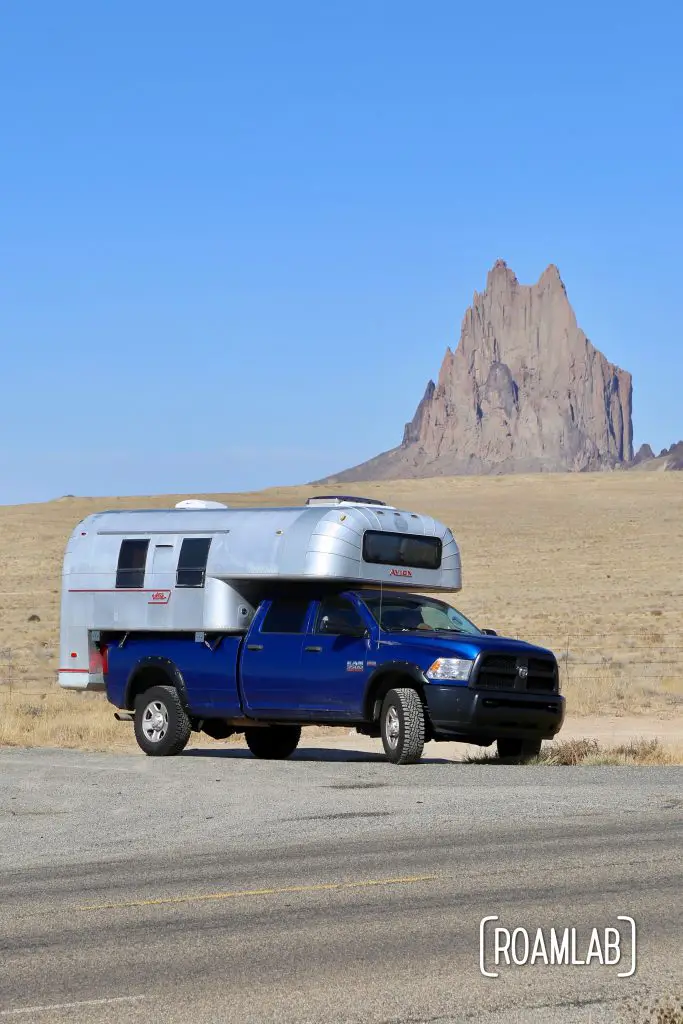
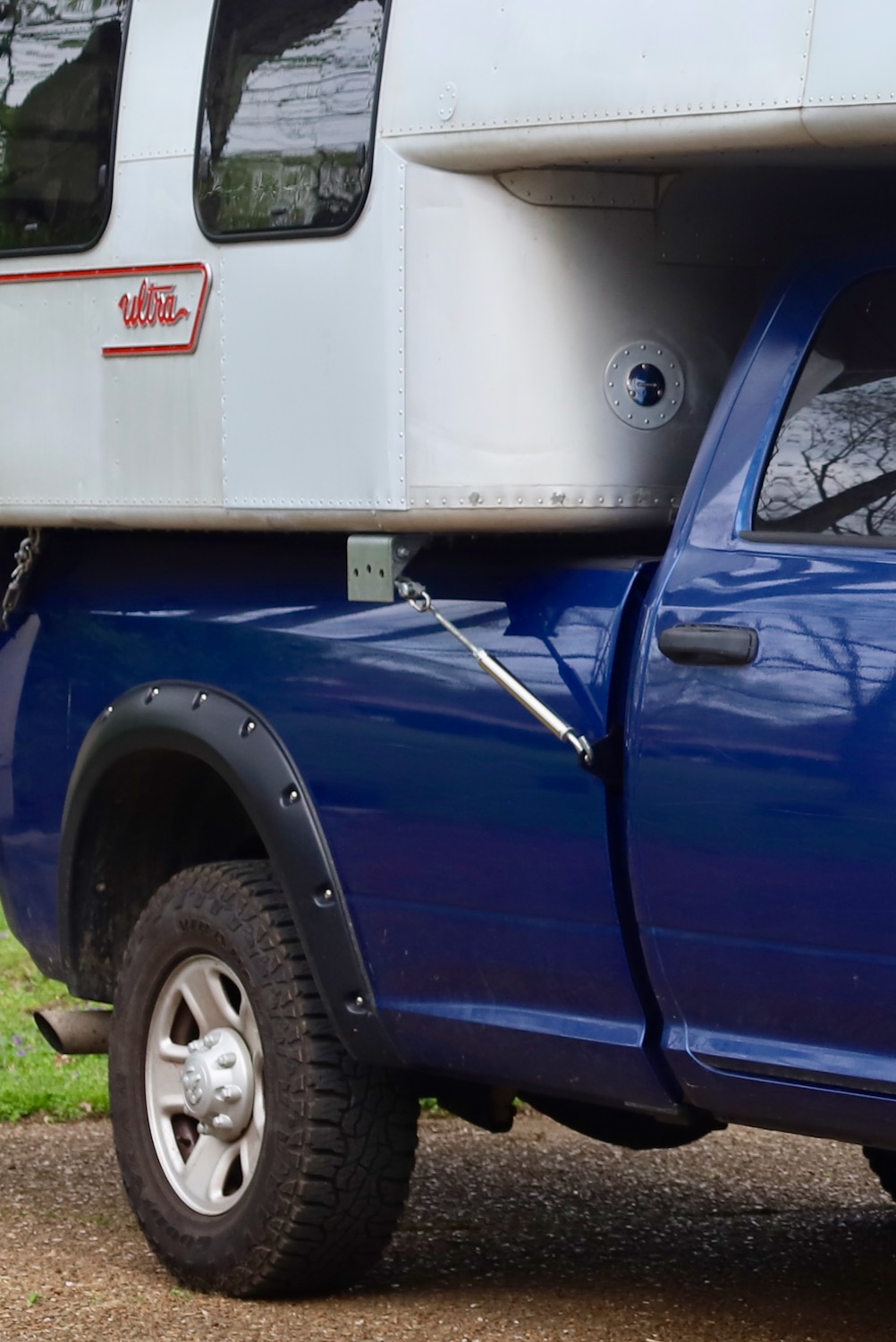
What’s the Worst That Could Happen?
Of course, there is another side to this calculation. Many people will happily offer their budget tie-down solutions with chains and shackles rather than specialized truck camper turnbuckles. One tie-down system appears to be just as good as the next..until it fails.
And even with a poor tie-down system, we rarely see the worst-case scenario of a complete tie-down failure. Usually, gravity and friction do most of the work in keeping a truck camper in a truck bed. After all, quality truck camper turnbuckles aren’t for the anticipated smooth rides cruising down quiet back roads. They are for unforeseen collisions, uneven terrain, and surprise wind gusts.
In most stories about a tie-down failing, it isn’t the turnbuckle that fails, per se. Quite often someone is driving with their truck camper and experiences a sharp jolt. What tends to give way is the camper mount point which was screwed or bolted into the truck camper wing. These are intended to take a great deal of stress, but between the weight and inertia of the camper and the sharp, strong force of the jolt, something has to give.
But that something could have been the turnbuckle. Not for the turnbuckle to break, but for it to absorb some of the shock. Quality truck camper turnbuckles cost more than the basic turnbuckles you find at the tractor supply store because they included springs or some other type of shock to absorb strong jolts rather than stress the critical built-in camper mount points.
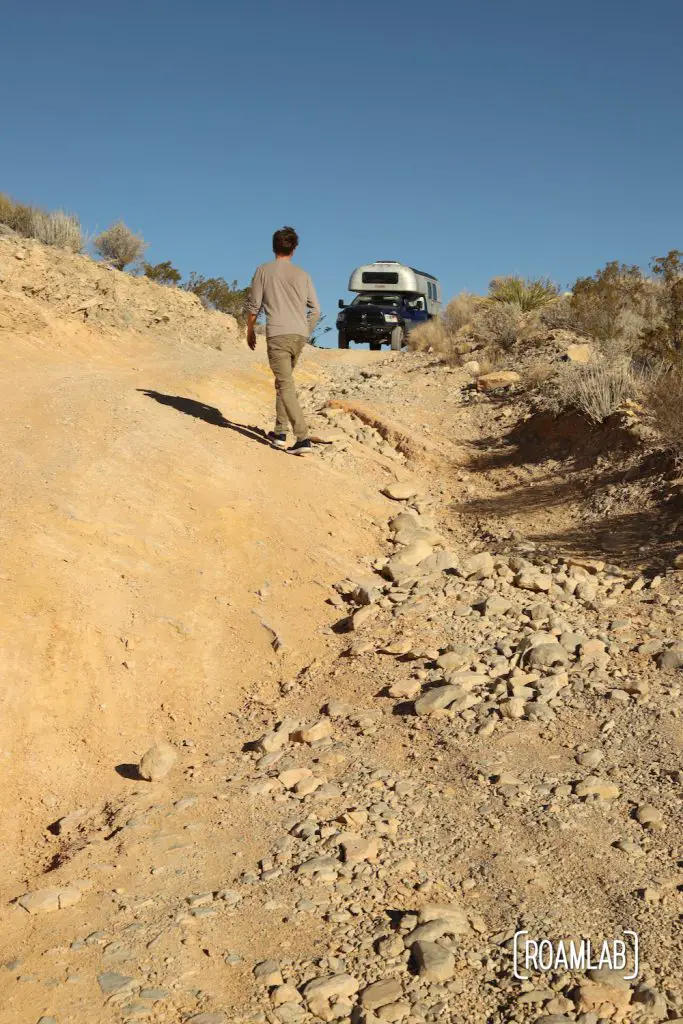
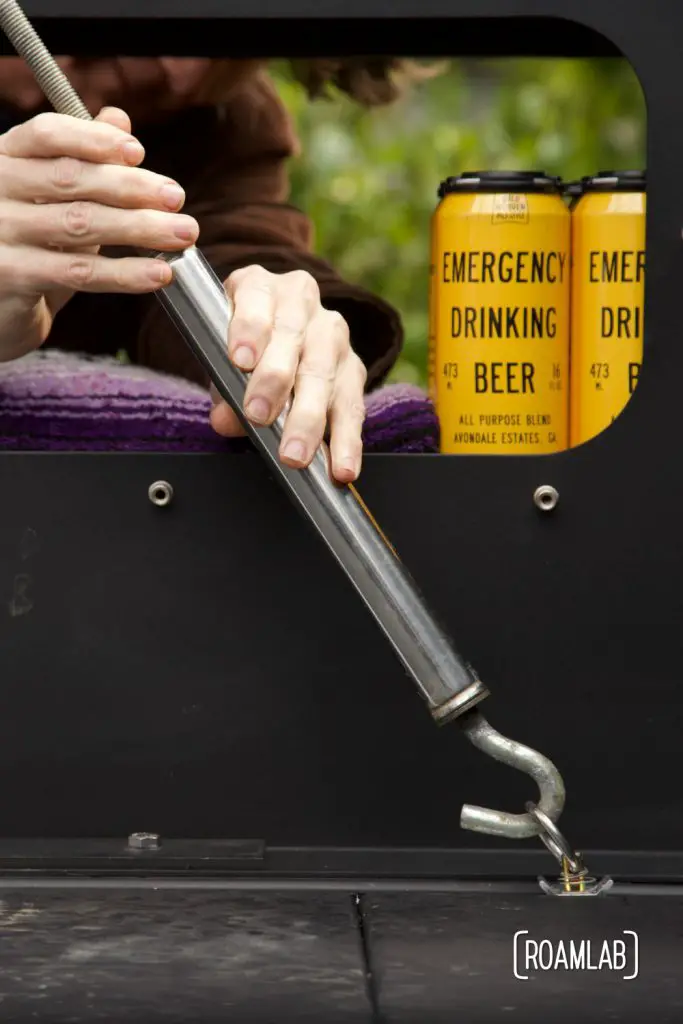
The Twisting Threads of our Truck Camper Turnbuckle Journey
Given the rough terrain we like to cover, we are fortunate to never have had our own tie-down horror story. Even after our initial faux pause of using an underweight cable to secure the truck camper, we continued with more than our fair share of missteps. And, in turn, lessons learned.
Lesson #1: Binding a truck to a camper is far too serious a matter for some cut-rate stopgap such as cable. We need a proper tiedown system, and that means turnbuckles.
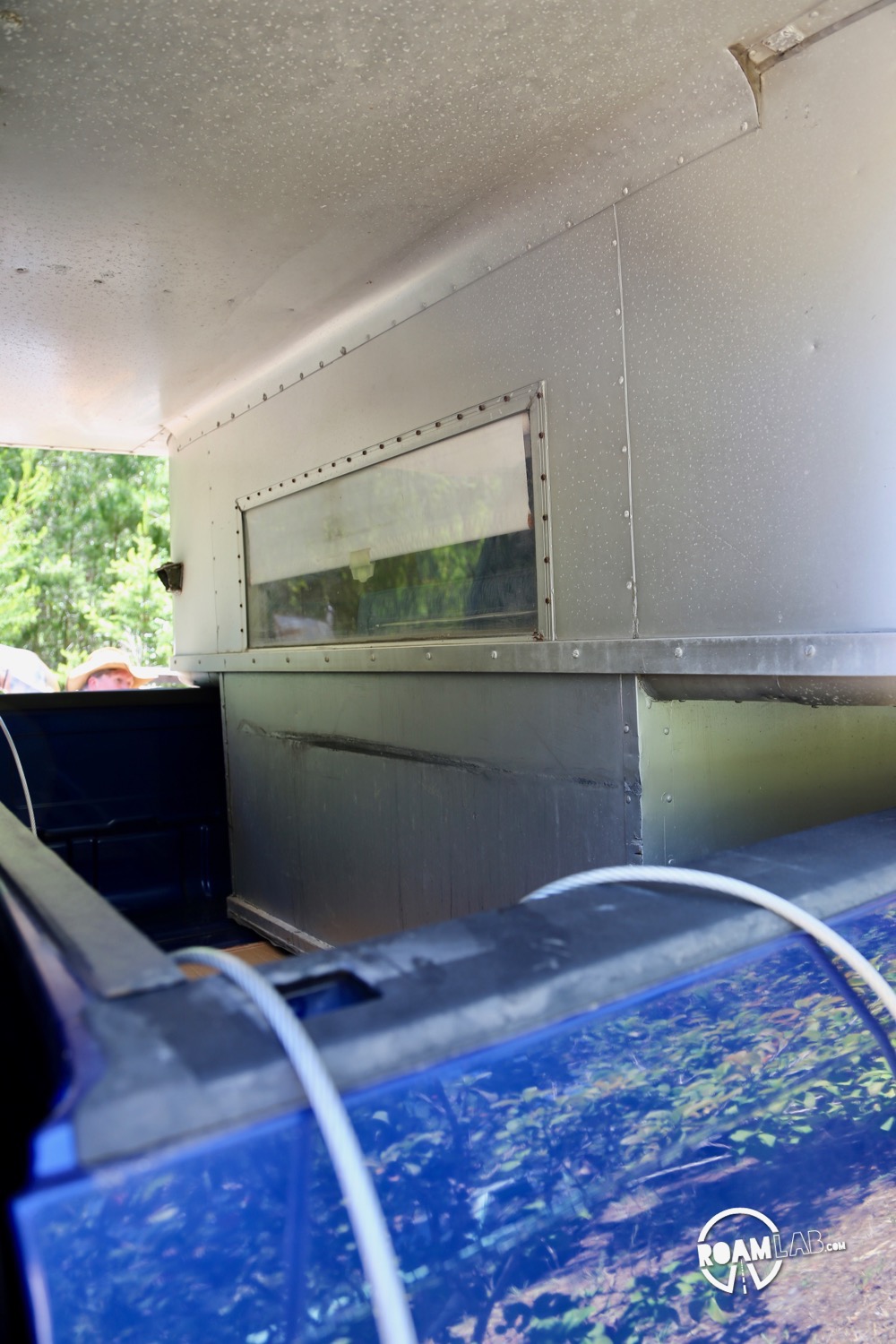
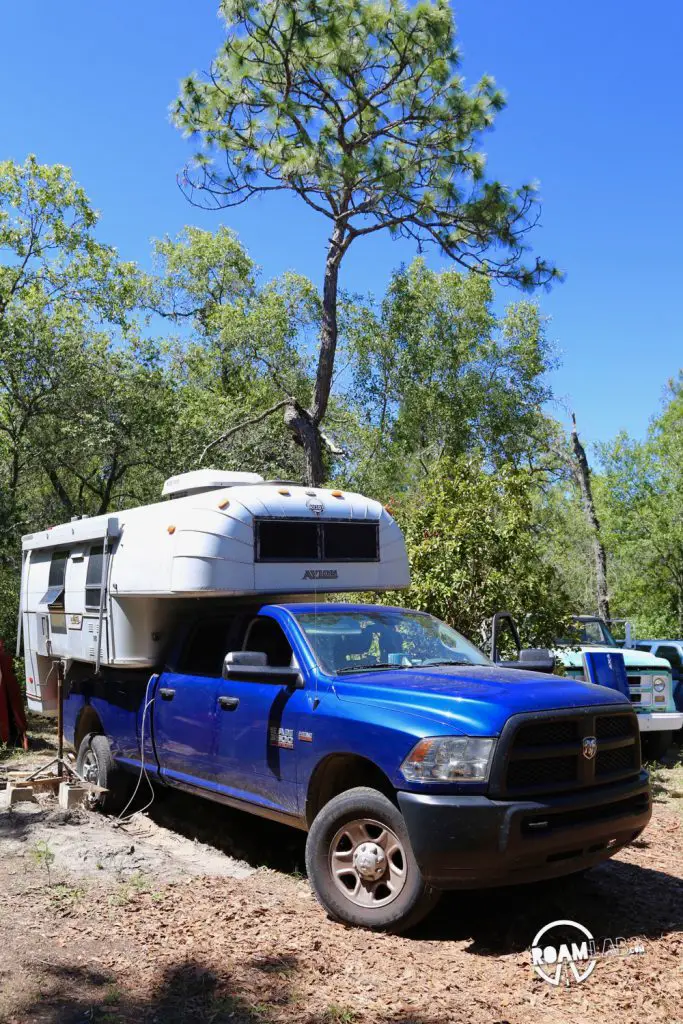
Completely Gutted
The first thing we do once we have our truck camper to the workshop is to gut it and replace the wings. With the new wings, we finally have a secure camper mount point for turnbuckles. And rather than relying on the underrated factory truck bed tie-downs to hook the other end of the turnbuckles, we install a set of Brophy Camper Tie-Downs. Everything looks right. But there is a weak link in this chain.
Frankly, the gut probably saves us from a catastrophic failure in the early days because we remove almost half of the camper weight and thus, a lot of the force that would strain the tie-down systems. Despite the lighter weight, the first set of turnbuckles we buy as part of this renovation are woefully underweight.
We quickly discover that the cast aluminum turnbuckles we initially use may be rated for the camper’s weight, but not the full force it could exert from a powerful jolt. We will need forged turnbuckles. This goes for the shackles we use as well.
Lesson#2: Get turnbuckles with the right weight rating for our camper.
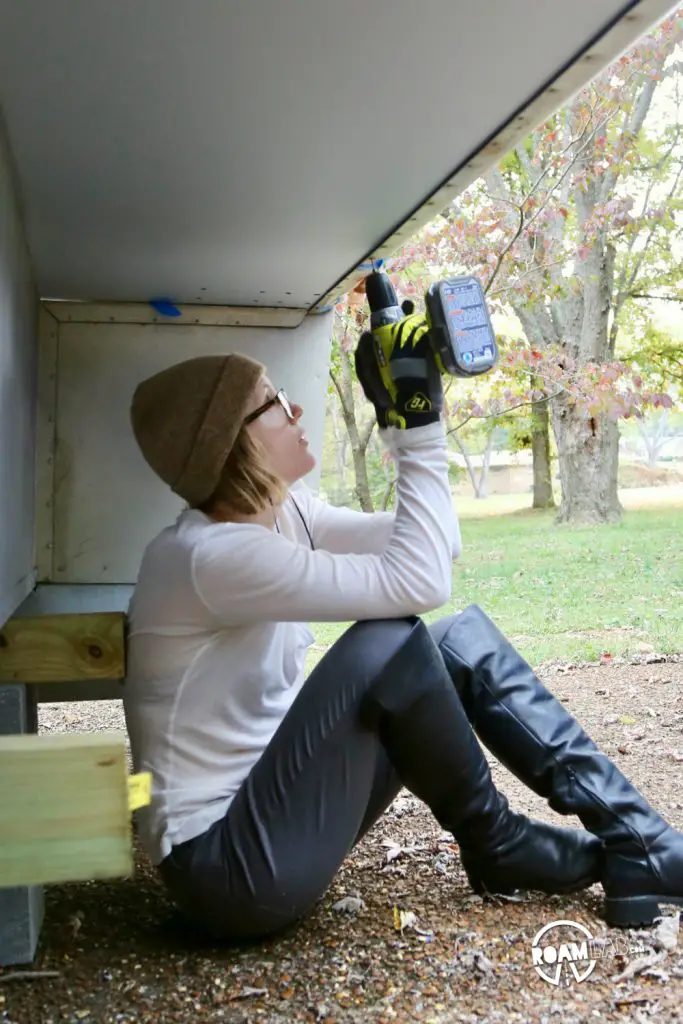
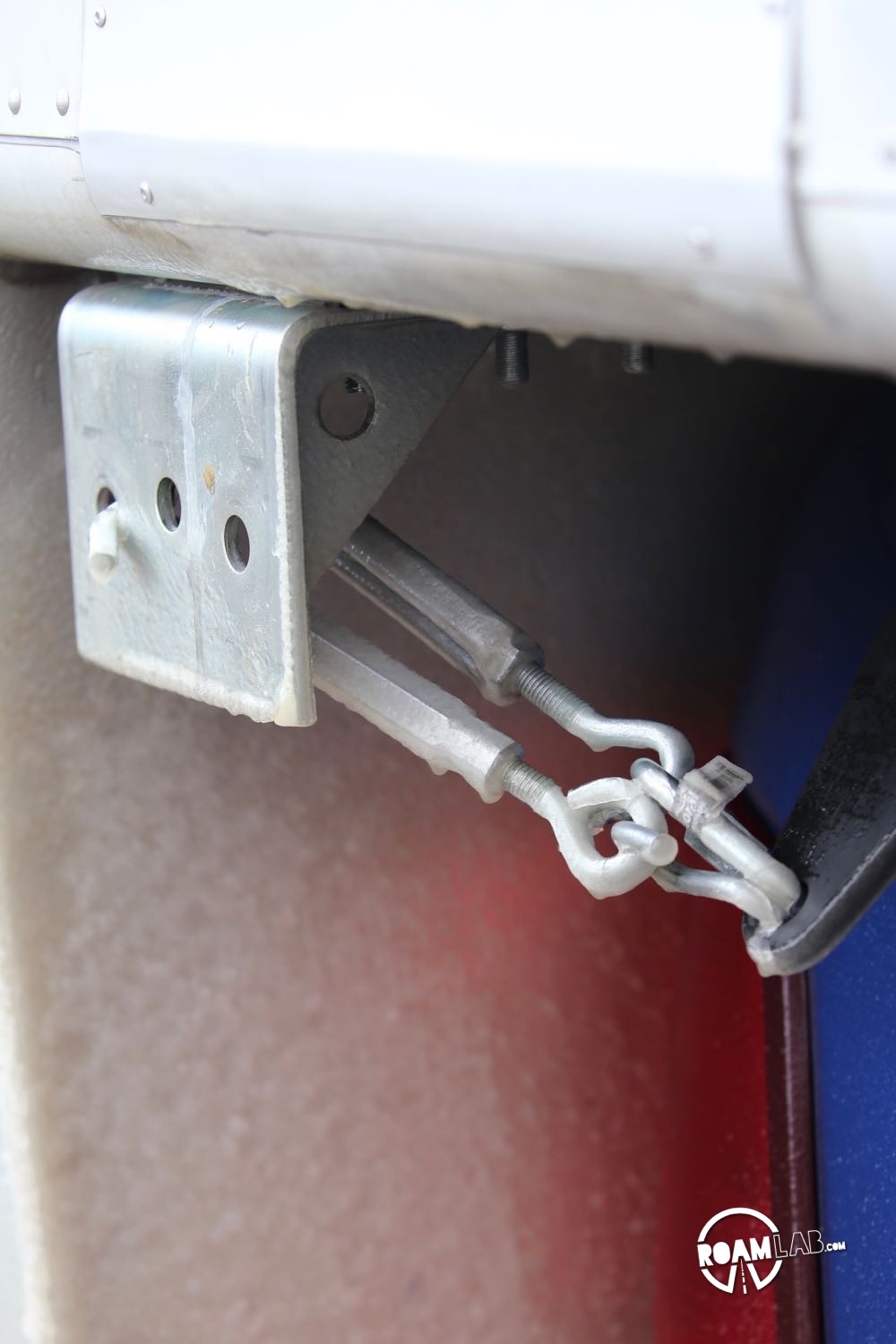
Pushing the Limits
Granted, the “right turnbuckles” are not as easy to find in local hardware stores. For a while, we use two turnbuckles on each tie-down point. Yes, another stopgap.
Nevertheless, we do find a set of suitably rated turnbuckles. We happily travel with it for several years. With it, we even tackle the Rimrocker Trail, a rough series of narrow forest roads from Montrose, Colorado to Moab, Utah.

On the Rimrocker trail, we finally acknowledge that we have exceeded the limits of our current Brophy tiedown system. And as part of beefing up the mounts on our truck with the HappiJac Tie-down System, we finally settled on a proper, truck camper-specific set of turnbuckles.
Why did it take us so long? Specialized truck camper tie-downs are more expensive and we are cheap. That extra $100 had us on the fence for years. Then again, the thousands of dollars we stood to lose in an accident should have easily clarified the choice. But it took the rough terrain of the Rimrocker to impress on us the force the truck and camper can experience while on the trail, despite our best intentions. And so we capitulated.
Lesson #3: Don’t be too cheap to get the right tool! Invest in truck camper turnbuckles with shocks.
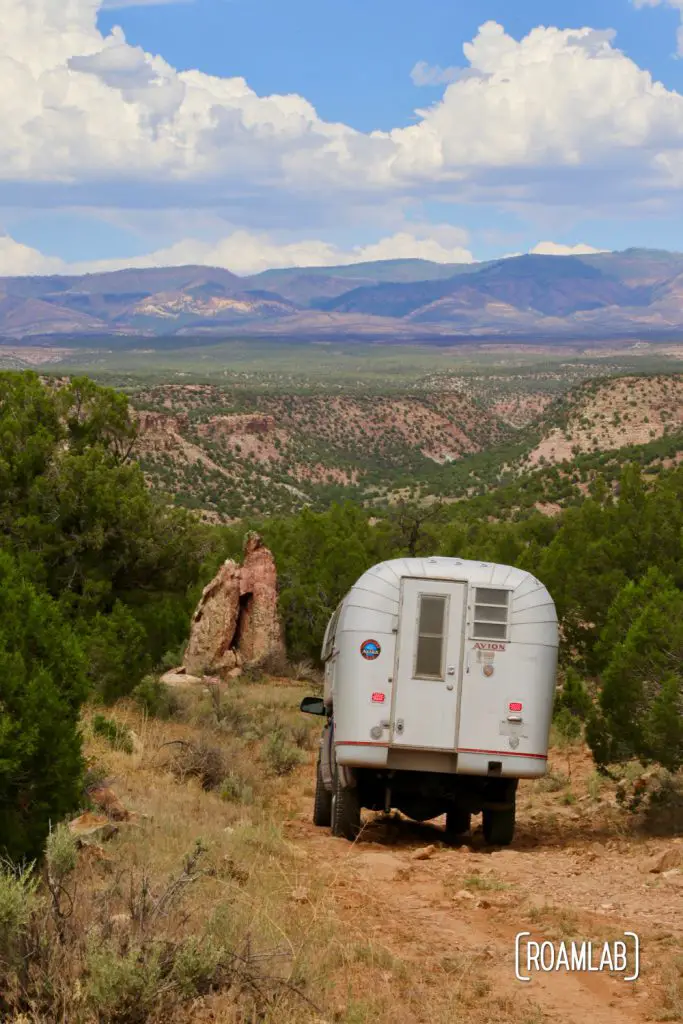

But That’s Not The End
And you would think that’s the end of the story, wouldn’t you? We have proper truck camper turnbuckles and everything. But then, they suddenly aren’t the right turnbuckles when we install a Bowen Customs truck bed and, as a result, completely rework our mounting system. Now, our fancy turnbuckles are too long to fit in the space designated to tie down the camper. But we are in a rush to get back on the road so we take a shortcut and swap in a set of ratchet straps.
Ratchet straps are incredibly handy. They allow for adjustable tension, much like a turnbuckle. But, like most turnbuckles, they won’t absorb the shock of a sharp jolt. And yet, we still rely on the ratcheting straps when we have our interview with Angela White for Truck Camper Magazine a month later. Thank you Angela for reminding me that these should not be a long-term solution. Shortly after, we trim the old set of HappiJac turnbuckles to fit in the new space.
Lesson #4: Don’t forget about the earlier lessons.
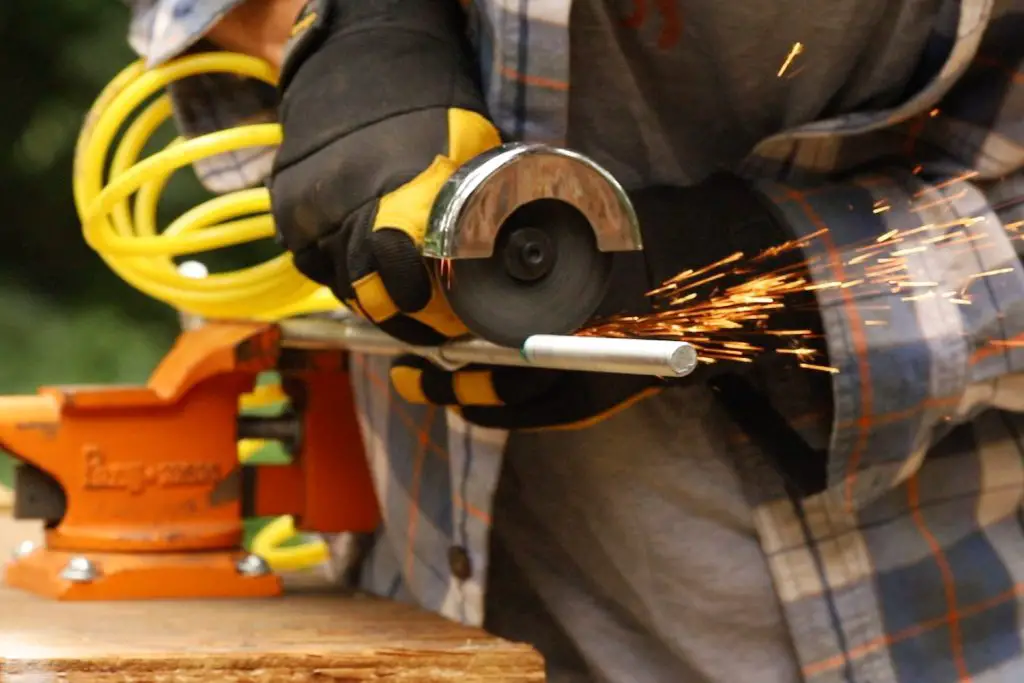
How to choose the right turnbuckles for your needs
Currently, we rely on a set of modified HappiJac truck camper turnbuckles. That said, turnbuckles come in various shapes and sizes, so it’s important to choose the right turnbuckles for our needs.
Some things to consider when choosing turnbuckles:
- What is the weight of your truck camper? And we mean the loaded weight with full tanks and cupboards.
- What is the maximum tension that can be applied? Don’t get turnbuckles just rated for the weight of the camper itself. You need turnbuckles rated for the potential force of the camper when it experiences a sharp jerk.
- In what environment will they be used? (Outdoors, indoors, saltwater environment, etc.) Most turnbuckles are completely exposed to the elements. We have had turnbuckles rust by the ocean and freeze solid in a snow storm. It’s important to be aware of the materials used in the turnbuckles and their risk of corrosion or other failures.
- What is the distance between the two mount points? Most specialized truck camper turnbuckles come as part of a tie-down kit. While their length is adjustable, it is within the bounds of the distance anticipated by that kit. So, if you have a custom situation, such as us, it is worth being aware of the range of distances that set can support.
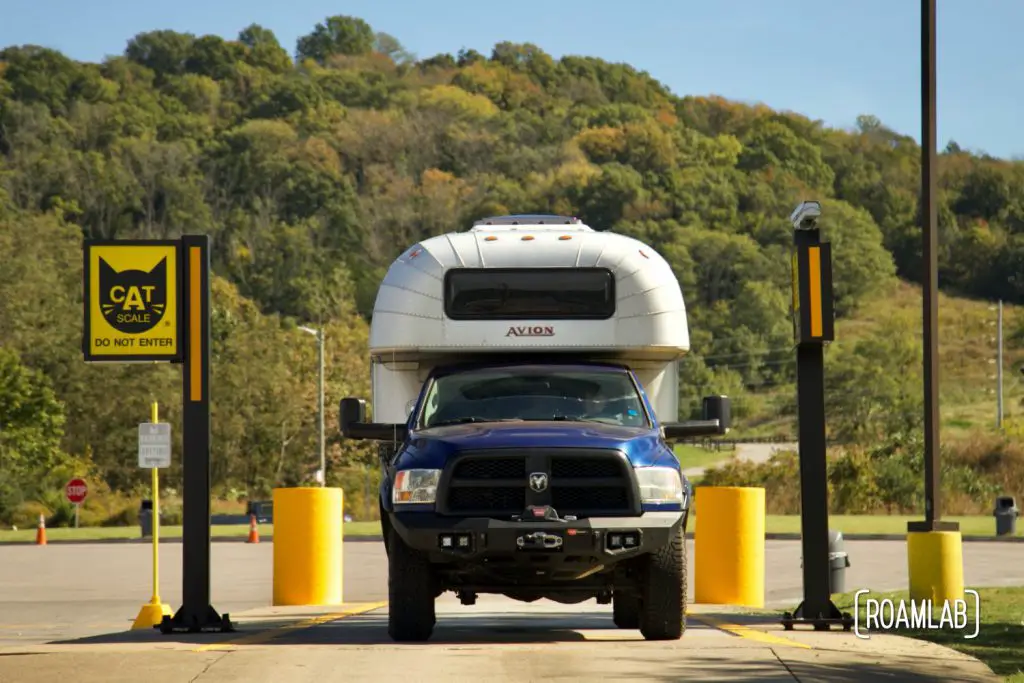
Popular Truck Camper Turnbuckles
With all those considerations made, the current market for truck camper turnbuckles makes the decision fairly easy for most. There are two major contenders in the truck camper tie-down turnbuckle market: HappiJac and Torklift. Both also sell tie-down systems compatible with their turnbuckles.
Both HappiJac and Torklift turnbuckles include shock absorbent features. Our front set of turnbuckles is spring-loaded, to allow some give when the truck hits a bump or some other event jerks the truck camper. And the rear turnbuckles use rubber shocks. Varying the resistance between the front and the back, dampens the camper from rocking back and forth.
HappiJac and TorkLift also have higher-end “quick-release” turnbuckles. These include a lever that will easily release the tension for easy removal but will return to the original tension when re-engaged. This is incredibly convenient for anyone who frequently has to remove and reattach their turnbuckles. But of course, this feature makes the turnbuckles more expensive. So, we haven’t gotten to the point when we are ready to shell out the extra amount even though we can appreciate how convenient that quick-release feature would be.
Truck Camper Turnbuckles Shopping Guide
Any of the turnbuckles below should accommodate a standard truck camper setup.
| Standard | Quick Release | |
|---|---|---|
| HappiJac | Happijac Standard Turnbuckle • Set of 4 Turnbuckles • 2 spring-loaded turnbuckles for the front tie-downs (15”-22”) • 2 stress guard turnbuckles for the rear tie-downs (21”- 33.5”) • Polished metal finish Shop Now | Qwik Load Lever • Set of 4 quick release handles • Replacement handles to upgrade turnbuckles • Locking pin Shop Now |
| Torklift | Spring Load XL • Set of 2 turnbuckles • 35” to 45” long • White, grey, or black powder coat frame and stainless steel Shop Now | Torklift FastGuns • Sold individually • Comes in polished metal finish or white, grey, or black powder coat • Long (25″-43″) and short length (14.5″-21.5″) options • Spring tension indicator • Lifetime warranty • Lockable Shop Now |
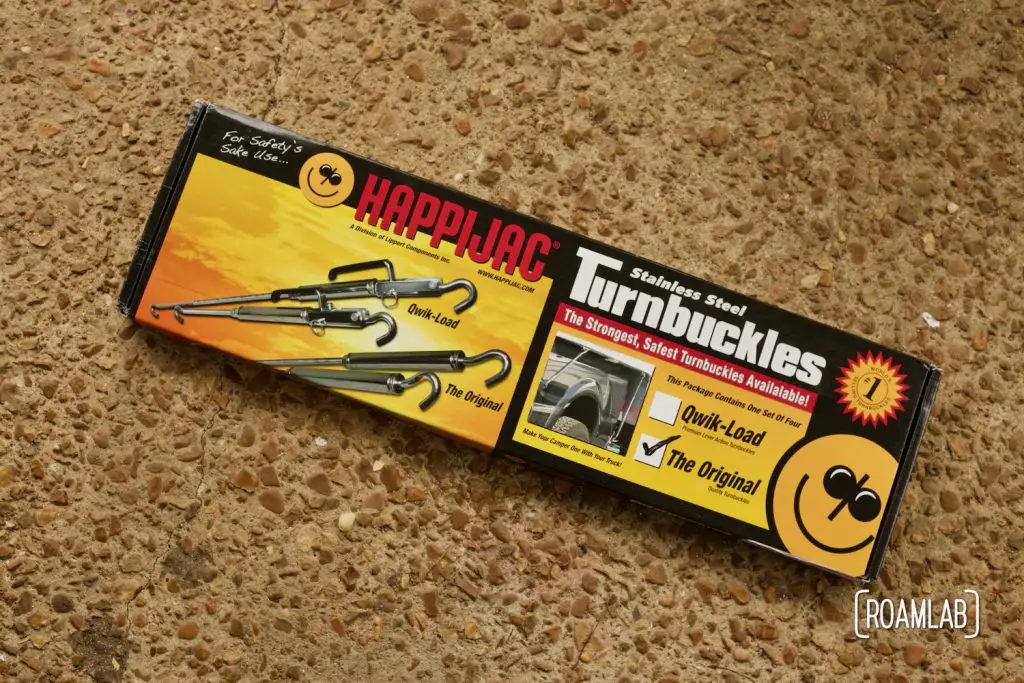
Tips on using truck camper turnbuckles safely and effectively
Before we call it a day, we figure it is worth running through a few truck camper turnbuckle safety precautions before returning to the road.
- Make sure that the turnbuckles are properly tightened and that there is no play in the system. This will help ensure that the camper is securely attached to the truck.
- Tighten the turnbuckles to the recommended specs. Over-tightening can damage the turnbuckles and/or the truck bed.
- Inspect the turnbuckles and truck bed tie-downs regularly for give, damage, and wear. Replace as necessary. A turnbuckle check is often part of any gas or meal stop we make while traveling.
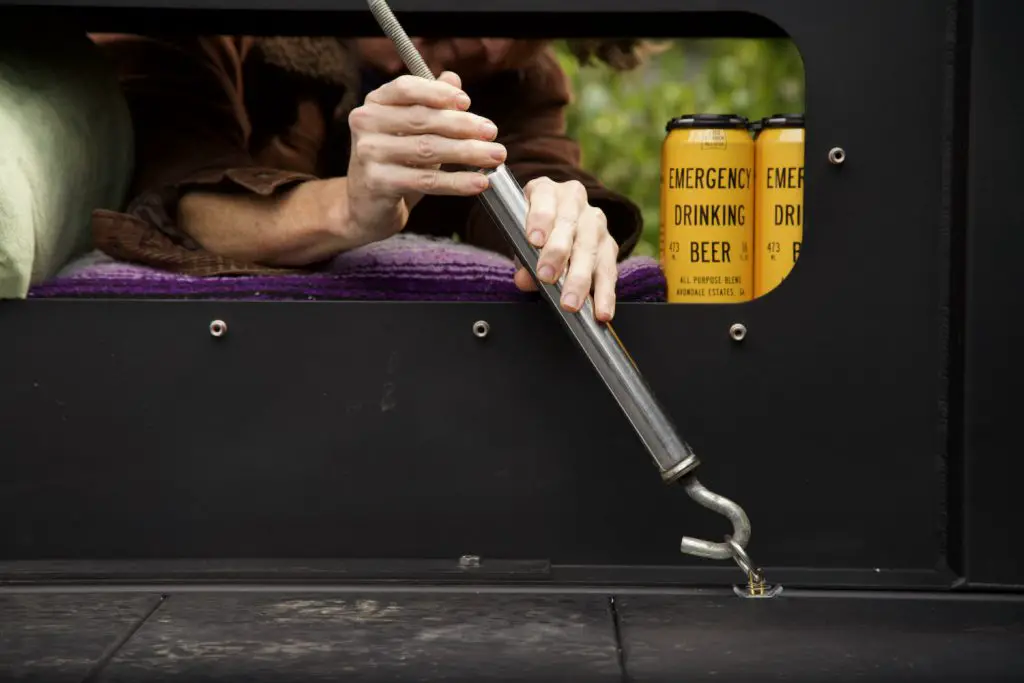
Are You Ready?
With all that, the question remains: how do you secure your camper to your truck? Is it strong enough? Is it flexible enough? If not, now that you know what is at stake it may be time to get a new set of truck camper turnbuckles.


